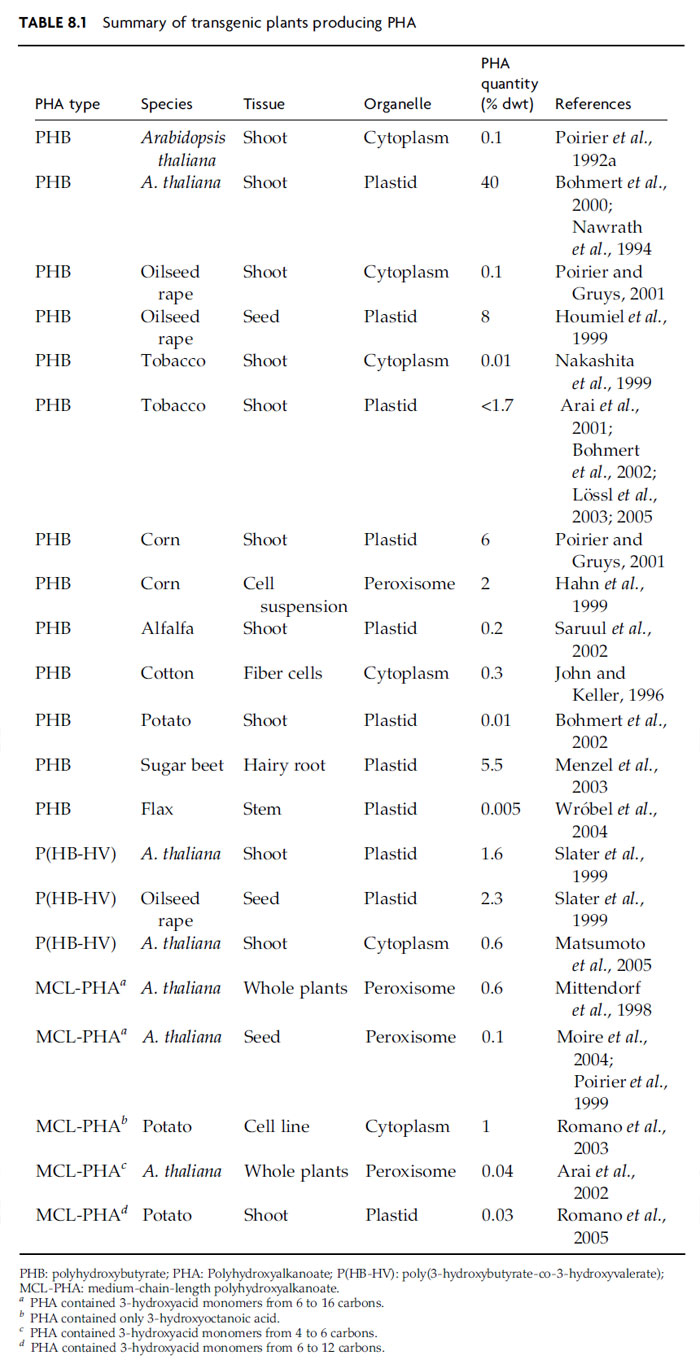Polyhydroxyalkanoate
Synthesis of PHA in plants was first demonstrated in 1992 by the accumulation of poly(3-hydroxybutyrate) (PHB) in the cytoplasm of the cells of Arabidopsis thaliana (Poirier et al., 1992a). Since then, a range of different PHAs has been synthesized in plants, including various copolymers such as poly(3-hydroxybutyrateco- 3-hydroxyvalerate) [P(HB-HV)] and medium-chain-length polyhydroxyalkanoates (MCL-PHAs) (Table 8.1) (Poirier, 2002). This has been achieved through the modification of various pathways localized in different subcellular compartments, such as the fatty acid and amino acid biosynthetic pathways in the plastid or the fatty acid degradation pathway in the peroxisome (Poirier, 1999, 2001; Poirier et al., 1995a). Although the initial driving force behind synthesis of PHA in plants has been for the biotechnological production of biodegradable polymers, PHA synthesis in plants has also been used as a useful and novel tool to study some fundamental aspects of plant metabolism. |
This section will focus on the metabolic engineering of plants for PHA production. However, since PHAs are polyesters naturally synthesized in bacteria and since most of our knowledge on the biochemical pathways for PHA synthesis and degradation has been obtained from studies in bacteria, the main pathways involved in PHA synthesis in bacteria will also be briefly described.




